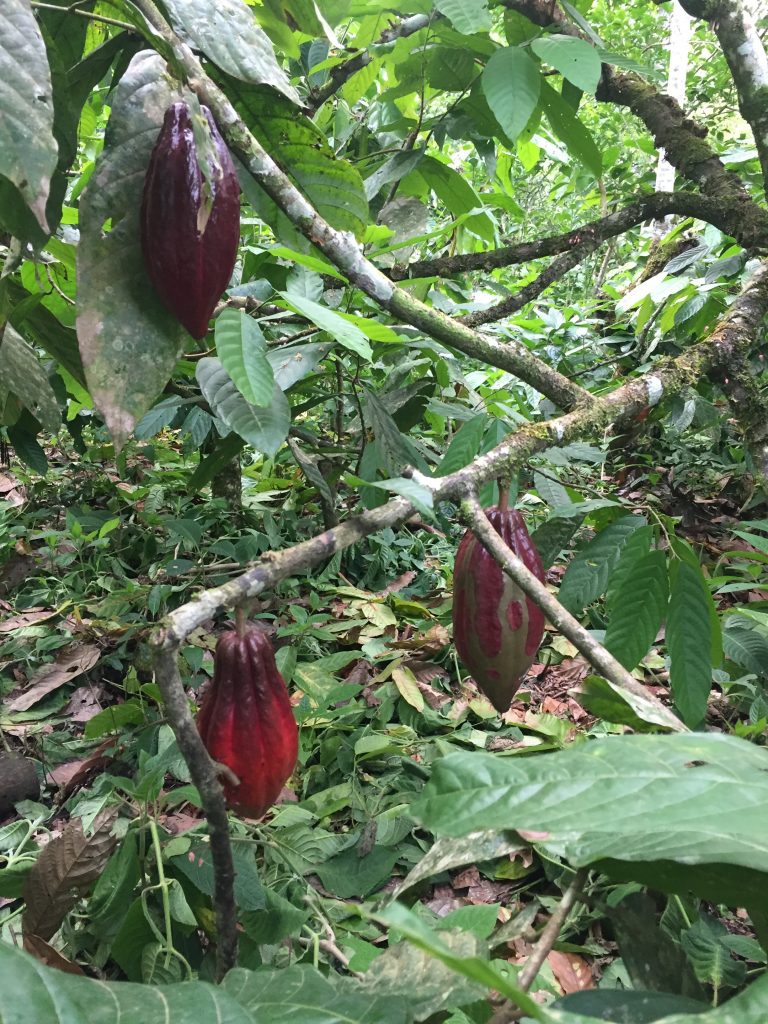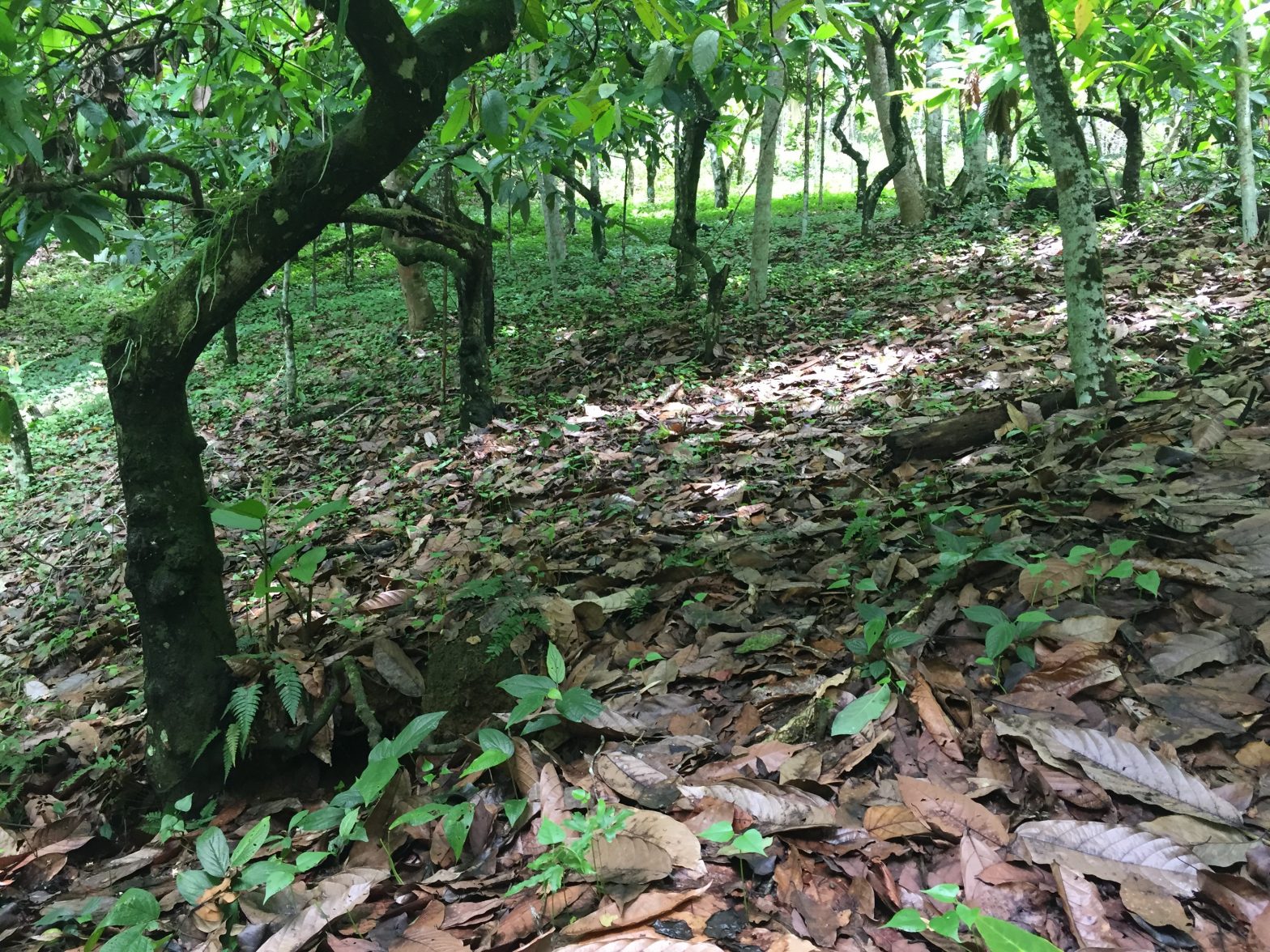By Ossi I. Ollinaho
Agroforestry remains in the margins of the contemporary food system even though it affords an impressive range of benefits, both with regard to the ecology and the social realm alike. It has been practiced for millennia and it is quite probable that people have been subtly enriching forests with useful plant species since the dawn of Homo Sapiens. More than billion people are estimated to be involved today with some sort of agroforestry, but the bulk of these practices ought to be seen as the surviving remnants of practices rooted in deep prehistory. In this post, we discuss what is agroforestry, why sweeping agroforestry transitions would be urgently needed and what is hampering such revolutionary paradigm changes.
What is agroforestry?
Agroforestry is founded on biodiversity; on the interactions between different species, including trees, and typically seen as an interface between (monocropping) agriculture and (plantation) forestry. However, rather than being some kind of hybrid between these two, agroforestry breaks away from their simplifying logic aiming to destroy everything but one species in a plot, what I call here the logic of single-species land use. There are vastly different agroforests; it might refer to almost anything from Finnish semi-natural forests yielding bilberries and mushrooms to a carefully cultured tropical multi-strata agroforestry. While two basic agroforestry pathways can be thought; the incorporation of perennials in agricultural cropping systems and the incorporation of crops in forest systems, agroforestry transitions can also begin from degraded lands; it is restorative land use.
Agroforestry entails a stupendous range of benefits: agroforests can reverse – today globally prevalent – vicious cycles of land degradation, desertification and biodiversity loss all the while producing a vast range of products such as fruits, nuts, oils, beverages, gums, resins, latex, timber, flavours and so on. Tree roots make soil ecosystems grow deeper and denser and stabilize the metabolism of the ecosystem and therefore afford its protection against external shocks, such as droughts and other extreme weather events. Agroforestry has also been touted as the best carbon sequester after natural forests. Given its massive benefits, including high land productivity, agroforestry researchers often ask themselves: why does agroforestry remain in the margins and there are no sweeping agroforestry transitions?
Agroforestry transitions
Its manifold empirical manifestations constitutes also a difficulty to study agroforestry. Not only are agroforests intrinsically dependent of the local climate and other-than-humans, but also the objectives, knowledges and skills of agroforesters and socioeconomic conditions and pressures in particular regions have their role in producing the massive variety of agroforests. It may be that to tackle this complexity, scholars typically zoom in exclusively at the plot or farm level. Attempts to grasp the complexity at broader levels, such as defining agroforestry as a ‘multifaceted, multicomponent and multiproduct activity with many purposes and benefits’ end up saying very little and render this increasingly legitimate concept prone to misuses.
In order to provide a general, yet more accurate definition for agroforestry, I, together with Associate Professor Markus Kröger, trichotomized agroforestry into distinct pathways: the good, the bad and the ugly. The good refers to agroforestry transitions that are ecologically beneficial for particular territories and help strengthen social justice in those territories. The bad refers to such transitions that help further root and institutionalize agribusiness practices that harm the environment and/or social equity. The ugly pictures transitions that directly spur the deforestation and/or degradation of primary or seminatural forests under the banner of agroforestry. It is important to note that while such transitions are not always labeled as agroforestry, overly loose definitions afford such labeling and, thereby, enhance the legitimacy of such transitions irrespective of their impacts. Below, I write about the good type of agroforestry.

Implications of agroforestry
It is vital to emphasize that breaking away from the logic of single-species land use, agroforestry practices are revolutionary – tantamount to reversing the modernization of agriculture. The mainstreams of agricultural research yet embrace transitions of complex systems, such as agroforestry, into simpler ones based on monocultures of industrially managed food crops or monocultural plantations of tree crops. The problems of such logic cannot be overemphasized; it underlies the intensive use of fertilizers and pesticides and associated soil and land degradation as well as severe damages to human and other-than-human health. The logic of single-species land use affords mechanization, scale enlargement and rapid expansion of extractive plantations of both annual crops and trees alike. As agroforestry is founded on interactions between different species, even a small step toward agroforestry ruptures this destructive logic.
Agroforestry, however, should be seen as a radical proposal also beyond the mere biophysical dimension. What is particularly important to note is that agroforestry reduces, and typically makes obsolete, externally produced inputs, particularly fertilizers, pesticides and seeds. This translates in the sociopolitical dimension as a powerful and democratizing process through which farmers gain autonomy vis-à-vis the agro-industrial complex—for example, large agrochemical corporations such as Bayer and Syngenta. Gaining autonomy entails not only a political empowerment of small farmers but also a fundamental rethinking of feasibility calculations. It appears that rupturing the logic of single-species land use, embracing agroforestry brings in a series of other ruptures in the food system, remediating and healing it.
What agroforestry requires besides labour is secure land tenure. As trees within agroforests may grow centuries old, agroforestry requires drastically longer planning and investment time frames than today’s conventional farming. Without confidence that the land will be there twenty years in the future (and will still belong to them), farmers are unlikely to invest, for instance, in nut trees, which often take a long time to bear nuts. Indeed, the question of land ownership and access to land should become central in agroforestry research. Given the historical land concentration in various countries, such as Brazil, agroforestry transitions of relevant scale require a redistributive land reform, which may be the single most contested policy there has ever existed.
Agroforestry requires incentives and the state has the responsibility to even up the ‘playing field’ for agroforestry and monoculture land use. As long as this field, the broader political economy – including mainstream academic research, powerful actors and societies’ and global socioeconomic structures, within which also farmers must act – remains taken as given, agroforestry will never grow from its niche as a land use practice, even with its massive potential to resolve nearly any food related land use problem. Food system faces a paramount challenge: how to increase global food production while adapting to and mitigating climate change and addressing equity and social justice? If agroforestry is as promising as the four decades of agroforestry research claim it to be, it is impressively well suited to meet this quadruple challenge. Structural transformations, however, are needed to bring about sweeping agroforestry transitions. Would rupturing the logic of single-species land use be an adequate trigger for such an urgently needed paradigm change?
Ossi I. Ollinaho is a Teacher of Global Development Studies at the University of Helsinki. He is also a member of Helsinki Institute for Sustainability Science.
References:
Altieri, M. A. (1989). Agroecology: A New Research and Development Paradigm for World Agriculture. Agriculture, Ecosystems & Environment, 27, 37–46.
Coolsaet, B. (2016). Towards an agroecology of knowledges: Recognition, cognitive justice and farmers’ autonomy in France. Journal of Rural Studies, 47, 165–171. https://doi.org/10.1016/j.jrurstud.2016.07.012
González, N. C., & Kröger, M. (2020). The potential of Amazon indigenous agroforestry practices and ontologies for rethinking global forest governance. Forest Policy and Economics, 118, 102257. https://doi.org/10.1016/j.forpol.2020.102257
Graeber, D., & Wengrow, D. (2021). The Dawn of Everything: A New History of Humanity. Penguin Books.
Miller, R. P., & Nair, P. K. R. (2006). Indigenous Agroforestry Systems in Amazonia: From Prehistory to Today. Agroforestry Systems, 66(2), 151–164. https://doi.org/10.1007/s10457-005-6074-1
Nair, P. K. R., & Garrity, D. P. (Eds.). (2012). Agroforestry—The Future of Global Land Use (Vol. 9). Springer Netherlands. https://doi.org/10.1007/978-94-007-4676-3
Ollinaho, O. I., & Kröger, M. (2021). Agroforestry transitions: The good, the bad and the ugly. Journal of Rural Studies, 82, 210–221. https://doi.org/10.1016/j.jrurstud.2021.01.016
Vandermeer, J., van Noordwijk, M., Anderson, J., Ong, C., & Perfecto, I. (1998). Global change and multi-species agroecosystems: Concepts and issues. Agriculture, Ecosystems & Environment, 67(1), 1–22. https://doi.org/10.1016/S0167-8809(97)00150-3
Photo Credits: Ossi I. Ollinaho

